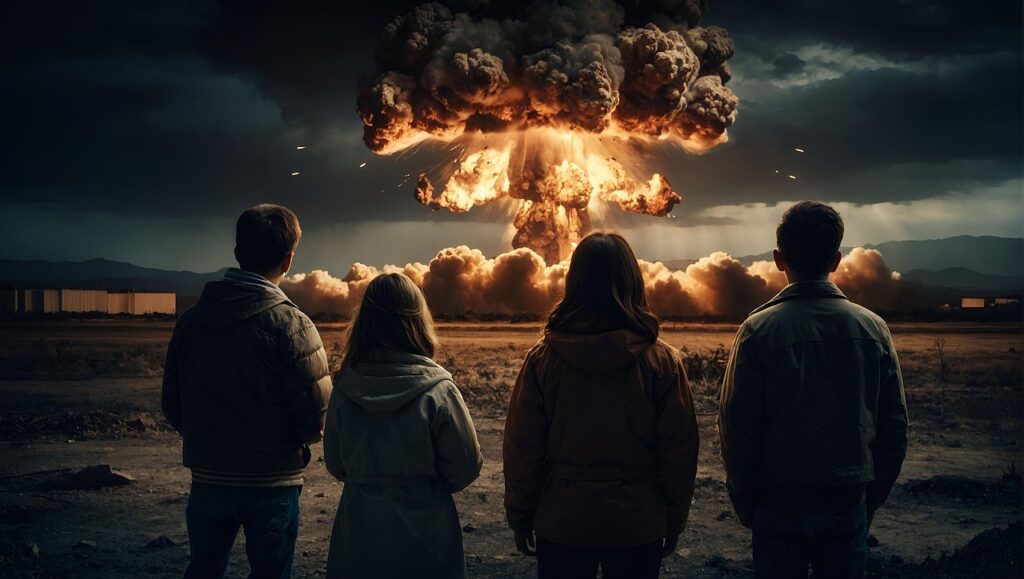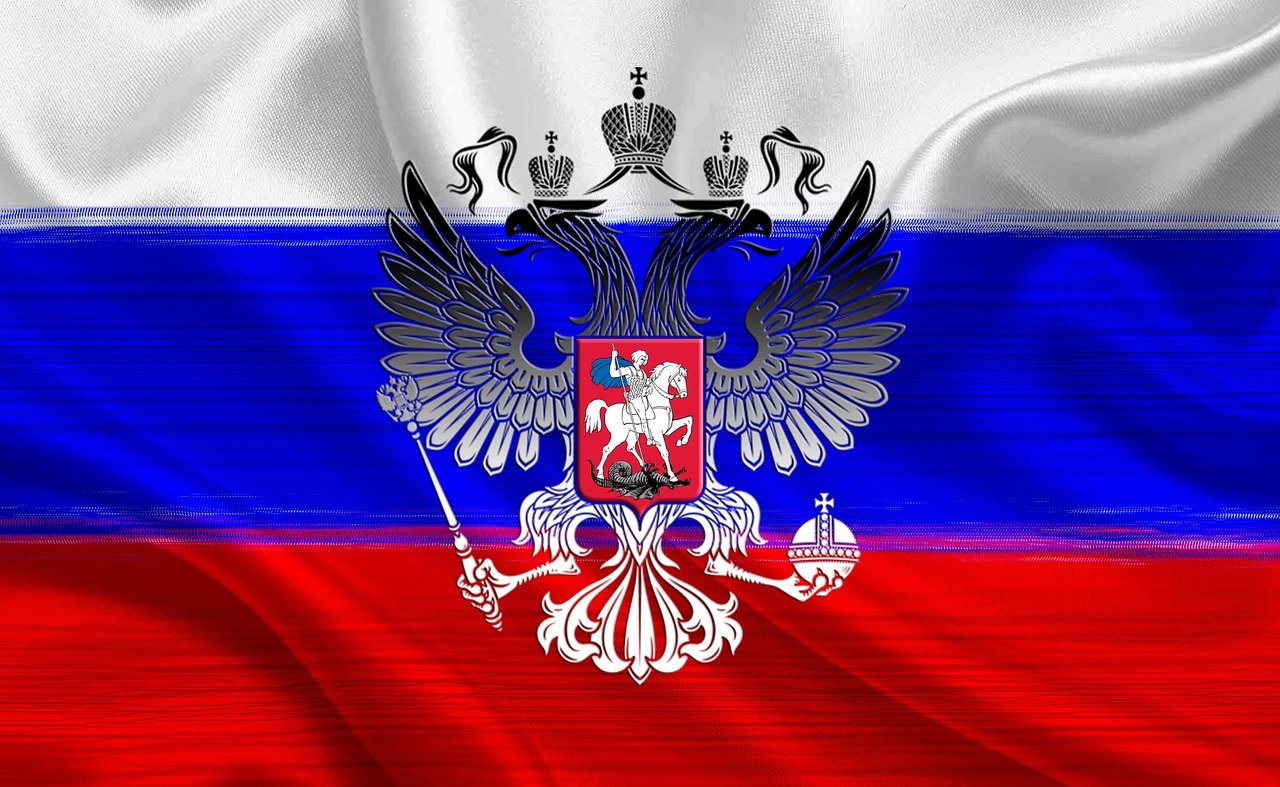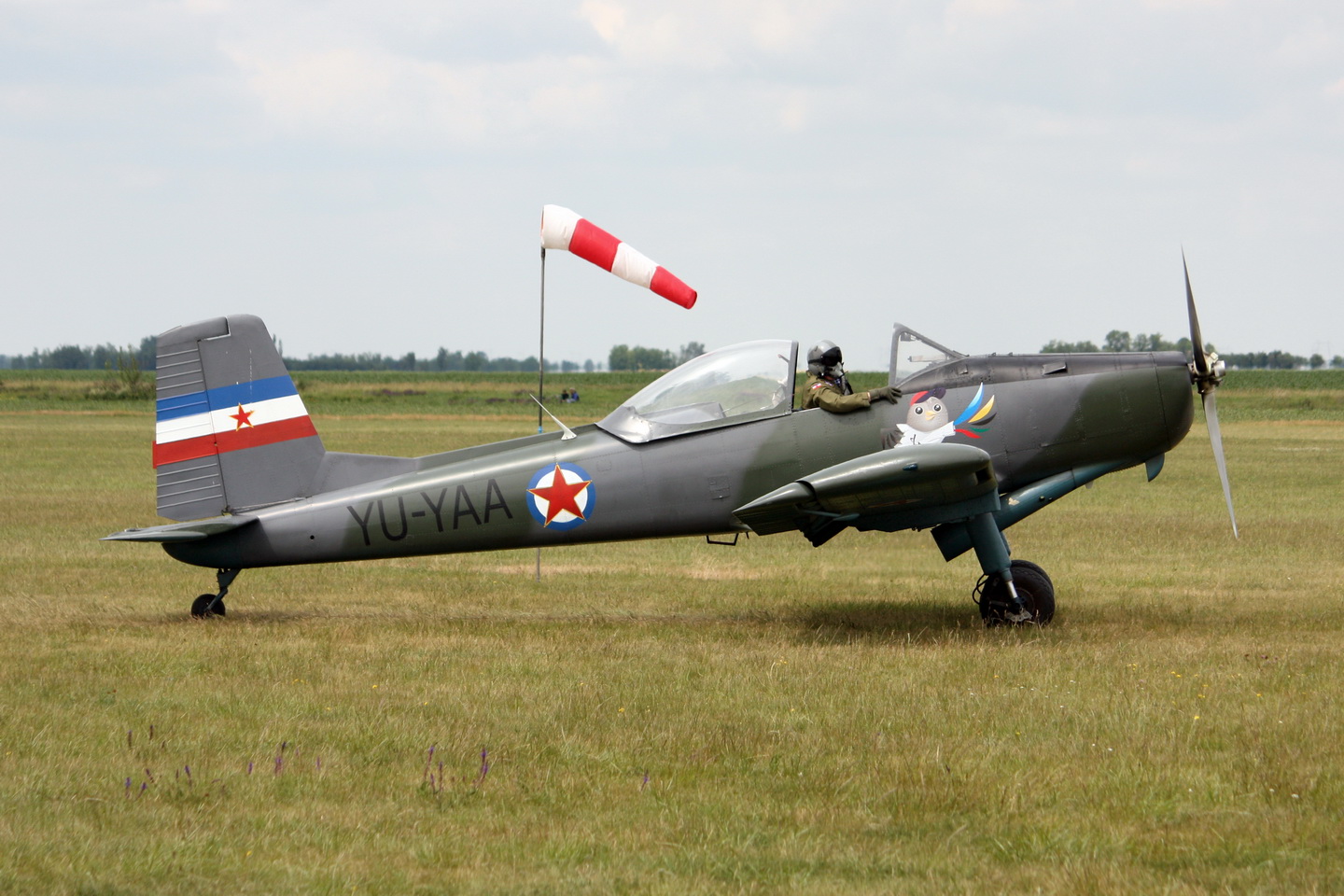
The global security landscape has been increasingly defined by a palpable tension, particularly as Russia’s ongoing military campaign in Ukraine continues to reshape geopolitical alliances and challenge established norms. In this environment, the specter of nuclear escalation, once relegated largely to historical discourse, has re-emerged as a central concern. Russian President Vladimir Putin’s recent declaration that a direct clash between Russia and NATO would bring the world “one step away from a full-scale World War III” underscores the profound gravity of the current moment, reflecting an uncompromising strategy that leverages nuclear rhetoric as a deterrent against deeper Western involvement.
While the bellicose pronouncements from Moscow, including the decision to deploy tactical nuclear weapons in Belarus, have kept international observers on high alert, US officials have consistently reported seeing no immediate signs of Russia actively preparing to use nuclear weapons. Nonetheless, the inherent risks associated with such heightened rhetoric and military posturing remain undeniable. Any nuclear exchange, regardless of its initial scale, is widely understood to be catastrophic for all parties involved, an outcome that necessitates a rigorous and dispassionate analysis of the underlying dynamics.
This article delves into the intricate facets of Russia’s nuclear posture, exploring the quantitative dimensions of its arsenal, the hypothetical but chilling outcomes predicted by simulations, and the strategic rationale behind potential targeting priorities in the event of an unimaginable conflict. Furthermore, it examines the pivotal shifts in Russia’s nuclear doctrine, shedding light on the conditions under which Moscow states it would contemplate the use of its nuclear capabilities. Such an examination is crucial for understanding the complexities of contemporary deterrence and the precarious balance of global power.

1. **Putin’s Assertive Nuclear Rhetoric and Escalation Warnings**
The statements emanating from Moscow, particularly from President Vladimir Putin, have frequently employed a stark and uncompromising tone regarding Russia’s nuclear capabilities. This rhetoric serves as a consistent element in the Kremlin’s broader strategy, aimed at deterring what it perceives as provocative actions from the West. Putin’s recent assertion that “Everything is possible in the modern world” encapsulates a deliberate ambiguity, designed to maintain a high degree of uncertainty regarding Russia’s potential responses to escalating tensions.
This strategic use of the “nuclear card” is particularly evident in the context of the ongoing conflict in Ukraine. For Moscow, this card has proven instrumental in discouraging more profound NATO engagement in the conflict, effectively setting a boundary for the extent of Western support to Kyiv. The persistent warnings about a potential “full-scale World War III” are not merely rhetorical flourishes; they are integral to a coercive diplomatic approach, signaling a willingness to escalate if certain red lines are perceived to be crossed.
However, it is equally important to note the assessments from Western intelligence. Despite the bellicose rhetoric from Putin and his Kremlin allies, and notwithstanding the controversial deployment of tactical nuclear weapons in Belarus, U.S. officials have repeatedly stated that they observe no tangible indications of Russia preparing for an imminent use of nuclear weapons. This disjunction between verbal warnings and observed actions highlights the complex interplay of deterrence and signaling in the current geopolitical environment.
Military equipment: 2007 Munich speech of Vladimir Putin
Categories: 2000s in Munich, 2007 in Germany, 2007 in Russia, 2007 in international relations, 2007 speeches
Summary: Putin’s speech at the 43rd Munich Security Conference in 2007 was delivered on 10 February 2007, at the invitation of the Munich Conference’s Chairman Horst Teltschik. It was the first speech by a Russian head of state at the Munich Conference. The main topics of his speech were criticism of the unipolar world order and of the role of the OSCE, NATO’s eastward expansion, disarmament and the Iranian nuclear program. Putin’s speech was seen as Russia’s message to the West that it would not accept a subordinate role in international affairs. The speech heralded a significant change in Russian foreign policy and signaled a more assertive and independent stance on the international stage. Putin made it clear that Russia was ready to defend its interests and take a more active role in shaping the global order.
The speech came to be known in Russian as the Munich speech (Russian: Мюнхенская речь).
Get more information about: 2007 Munich speech of Vladimir Putin
Read more about: Putin’s Escalation: A Deep Dive into Russia’s Nuclear Bomber Deployments, War Games, and the Looming Specter of Global Conflict
2. **The Global Nuclear Arsenal: A Balance of Destructive Power**
At the heart of the global nuclear dynamic lies a profound numerical parity, particularly between the two largest nuclear powers. According to estimates by the Federation of American Scientists, Russia possesses approximately 5,580 nuclear weapons. This figure is closely mirrored by the United States, which is estimated to have 5,428 nuclear weapons. This near-equilibrium in total warhead count underscores a foundational aspect of strategic stability, known as mutually assured destruction.
Beyond the overall inventory, the operational status of these arsenals is equally critical. Both nations are believed to maintain around 1,600 active deployed strategic nuclear warheads. These are the weapons ready for immediate use, forming the backbone of their respective deterrence postures. The sheer destructive capacity represented by these deployed warheads is sufficient to inflict catastrophic damage on a global scale.
Collectively, Russia and the United States command an overwhelming majority of the world’s nuclear armaments, controlling an estimated 88% of the global total of nuclear warheads. This concentration of power in two hands emphasizes their unique responsibility in maintaining global security. It also serves as a stark reminder that, despite the numerous nations possessing nuclear capabilities, the primary axis of nuclear confrontation and deterrence remains between these two historical rivals. China holds the third-largest nuclear arsenal, trailed by France and Britain.
It is a salient historical fact that no nation has resorted to the use of nuclear weapons in warfare since the United States deployed atomic bombs on the Japanese cities of Hiroshima and Nagasaki in 1945. This long-standing norm, while fragile, remains a critical pillar of international security, underscoring the profound aversion to crossing the nuclear threshold.
Military equipment: Nuclear weapon
Perrow: 2/2/2
TotalWidth: 350
Footer: MIRV
Sigfig: ionizing radiation,Firestorm
Categories: All accuracy disputes, All articles containing potentially dated statements, All articles needing additional references, All articles with dead external links, All articles with unsourced statements
Summary: A nuclear weapon is an explosive device that derives its destructive force from nuclear reactions, either nuclear fission (fission or atomic bomb) or a combination of fission and nuclear fusion reactions (thermonuclear weapon), producing a nuclear explosion. Both bomb types release large quantities of energy from relatively small amounts of matter.
Nuclear weapons have had yields between 10 tons (the W54) and 50 megatons for the Tsar Bomba (see TNT equivalent). Yields in the low kilotons can devastate cities. A thermonuclear weapon weighing as little as 600 pounds (270 kg) can release energy equal to more than 1.2 megatons of TNT (5.0 PJ). Apart from the blast, effects of nuclear weapons include extreme heat and ionizing radiation, firestorms, radioactive nuclear fallout, an electromagnetic pulse, and a radar blackout.
The first nuclear weapons were developed by the United States in collaboration with the United Kingdom and Canada during World War II in the Manhattan Project. Production requires a large scientific and industrial complex, primarily for the production of fissile material, either from nuclear reactors with reprocessing plants or from uranium enrichment facilities. Nuclear weapons have been used twice in war, in the 1945 atomic bombings of Hiroshima and Nagasaki that killed between 150,000 and 246,000 people. Nuclear deterrence, including mutually assured destruction, aims to prevent nuclear warfare via the threat of unacceptable damage and the danger of escalation to nuclear holocaust. A nuclear arms race for weapons and their delivery systems was a defining component of the Cold War.
Strategic nuclear weapons are targeted against civilian, industrial, and military infrastructure, while tactical nuclear weapons are intended for battlefield use. Strategic weapons led to the development of dedicated intercontinental ballistic missiles, submarine-launched ballistic missile, and nuclear strategic bombers, collectively known as the nuclear triad. Tactical weapons options have included shorter-range ground-, air-, and sea-launched missiles, nuclear artillery, atomic demolition munitions, nuclear torpedos, and nuclear depth charges, but they have become less salient since the end of the Cold War.
As of 2025, there are nine countries on the list of states with nuclear weapons, and six more agree to nuclear sharing. Nuclear weapons are weapons of mass destruction, and their control is a focus of international security through measures to prevent nuclear proliferation, arms control, or nuclear disarmament. The total from all stockpiles peaked at over 64,000 weapons in 1986, and is around 9,600 today. Key international agreements and organizations include the Treaty on the Non-Proliferation of Nuclear Weapons, the Comprehensive Nuclear-Test-Ban Treaty and Comprehensive Nuclear-Test-Ban Treaty Organization, the International Atomic Energy Agency, the Treaty on the Prohibition of Nuclear Weapons, and nuclear-weapon-free zones.
Get more information about: Nuclear weapon
Read more about: Putin’s Escalation: A Deep Dive into Russia’s Nuclear Bomber Deployments, War Games, and the Looming Specter of Global Conflict
3. **The Peril of Escalation: Simulating a Global Nuclear Conflict**
The theoretical implications of a nuclear exchange are chillingly rendered through simulations designed to model potential outcomes. In 2019, Princeton’s Science and Global Security program published a significant study titled “Plan A,” which offered a detailed simulation of how a seemingly limited tactical nuclear exchange in Europe could precipitously escalate into a full-scale global nuclear conflict. Such academic exercises, while hypothetical, provide invaluable insights into the potential trajectory and devastating consequences of modern warfare.
The simulation painted a grim picture of rapid and widespread devastation. It estimated that within the initial hours of such an escalation, an astonishing 91.5 million people would perish. This immediate mortality figure encompasses deaths directly resulting from the initial blasts, thermal radiation, and early fallout. The sheer scale of this immediate loss of life underscores the unprecedented destructive power concentrated in modern nuclear arsenals.
Furthermore, the “Plan A” simulation did not conclude with the initial hours of impact. It projected that many more casualties would accrue in the months and years following the initial exchange. These subsequent deaths would be attributed to a myriad of factors, including widespread environmental collapse, the breakdown of societal infrastructure, global famine, and long-term health effects from radiation exposure. The ripple effects of a global nuclear war would thus extend far beyond the immediate blast zones.
Ultimately, the findings of such simulations serve as a powerful and sobering testament to the universally recognized truth: a nuclear exchange would be disastrous for all involved. The intricate interconnectedness of global systems ensures that the fallout, both literal and metaphorical, would transcend national borders, impacting humanity on an existential level. These analyses are crucial for informing policy and reinforcing the imperative of preventing any scenario that could lead to such an outcome.
Military equipment: World War III in popular culture
Categories: All articles lacking in-text citations, All articles lacking reliable references, All articles needing additional references, All articles that may contain original research, All articles with specifically marked weasel-worded phrases
Summary: World War III, sometimes abbreviated to WWIII, is a common theme in popular culture. Since the 1940s, countless books, films, and television programmes have used the theme of nuclear weapons and a third global war. The presence of the Soviet Union as an international rival armed with nuclear weapons created persistent fears in the United States and vice versa of a nuclear World War III, and popular culture at the time reflected those fears. The theme was also a way of exploring a range of issues beyond nuclear war in the arts. U.S. historian Spencer R. Weart called nuclear weapons a “symbol for the worst of modernity.”
During the Cold War, concepts such as mutually assured destruction (MAD) led lawmakers and government officials in both the United States and the Soviet Union to avoid entering a nuclear war. Various scientists and authors, such as Carl Sagan, predicted massive, possibly life-ending destruction of the Earth as the result of such a conflict. Strategic analysts assert that nuclear weapons prevented the United States and the Soviet Union from fighting World War III with conventional weapons. Nevertheless, the possibility of such a war became the basis for speculative fiction, and its simulation in books, films and video games became a way to explore the issues of a war that has thus far not occurred in reality. The only places that a global nuclear war has ever been fought are in expert scenarios, theoretical models, war games, and the art, film, and literature of the nuclear age. The concept of MAD was also the focus of numerous film and television works.
Prescient stories about nuclear war were written before the invention of the atomic bomb. The most notable of them was The World Set Free, written by H. G. Wells in 1914. During World War II, several nuclear war stories were published in science fiction magazines such as Astounding. In Robert A. Heinlein’s story “Solution Unsatisfactory,” the US develops radioactive dust as the ultimate weapon of war and uses it to destroy Berlin in 1945 and end the war against Germany. The Soviet Union then develops the same weapon independently, and war between it and the US follows.
The atomic bombings of Hiroshima and Nagasaki in 1945 made stories of a future global nuclear war hypothetical rather than fictional. When William Faulkner received the Nobel Prize in Literature in 1949, he spoke about Cold War themes in art, expressing concern that younger writers were too preoccupied with the question of “When will I be blown up?”
Get more information about: World War III in popular culture
Read more about: Putin’s Escalation: A Deep Dive into Russia’s Nuclear Bomber Deployments, War Games, and the Looming Specter of Global Conflict
4. **Strategic Priorities: Identifying Potential US Homeland Targets for Russian Strikes**
In the grim calculus of strategic warfare, a Russian nuclear strike on the United States homeland would be meticulously designed to achieve several critical objectives simultaneously. The primary aims would include decapitating American political and military leadership, thereby disrupting the nation’s ability to coordinate a response. Concurrently, such a strike would seek to sever vital command and control communication channels, plunging the country into a state of operational disarray.
Another key objective would be to nullify as many American nuclear assets as possible in a first strike, diminishing the retaliatory capacity of the United States. Beyond military infrastructure, the targeting strategy would also aim to devastate key industrial and commercial zones, crippling the economic and logistical foundations necessary for national resilience and recovery. This multi-pronged approach underscores the comprehensive nature of strategic nuclear planning.
Given these objectives, a number of major metropolitan areas in the United States would likely be designated as top targets. These areas are selected based on their confluence of political, military, and industrial significance. The list of probable targets would logically include Washington, D.C., as the seat of political power; New York City, a global financial hub; Chicago, a vital transportation and industrial center; and Los Angeles and San Francisco, significant economic and technological hubs on the West Coast.
Further targets in this category would likely extend to Dallas-Fort Worth, Miami, Philadelphia, and Houston, all critical for their economic output, strategic locations, and infrastructure. Additionally, cities such as Las Vegas, Salt Lake City, and Denver would likely be considered for their strategic value, including military installations or critical infrastructure. This comprehensive list reflects an intent to cripple the nation across governmental, economic, and military dimensions.
Military equipment: Nuclear triad
Categories: All Wikipedia articles in need of updating, All Wikipedia articles written in American English, All accuracy disputes, All articles with style issues, All articles with unsourced statements
Summary: A nuclear triad is a three-pronged military force structure of global-range land-based intercontinental ballistic missiles (ICBMs), submarine-launched ballistic missiles (SLBMs), and strategic bombers with nuclear bombs and missiles. More broadly, it can sometimes be used to mean any nuclear force with land, sea, and air basing, and more limited range. Countries build nuclear triads to eliminate an enemy’s ability to destroy a nation’s nuclear forces in a first-strike attack, which preserves their own ability to launch a second strike and therefore increases their nuclear deterrence.
Four countries are known to have complete nuclear triad: the United States, Russia, India, and China. Israel possesses all three delivery platforms but its Popeye SLCMs and fighter bombers are not intercontinental range.
Get more information about: Nuclear triad

5. **Undermining Command and Control: Key US Political and Military Infrastructure Targets**
Beyond major urban centers, a critical aspect of any strategic strike involves targeting the nerve centers of national command and control. Moscow’s strategy in a theoretical conflict would explicitly aim to “dismember the political and military chains of command” of the United States. This objective necessitates striking facilities that house leadership and facilitate the coordinated response to a nuclear attack, rather than focusing solely on population centers.
Among the most likely targets for this purpose would be key governmental and military continuity sites. The presidential retreat at Camp David in Maryland, for instance, serves as an emergency relocation site for the President and high-ranking officials, making it a priority target. Similarly, the Raven Rock Mountain Complex in Pennsylvania, known for its extensive underground bunkers intended for Pentagon use, would be a critical objective, designed to neutralize the operational capacity of the Department of Defense.
In addition to leadership bunkers, the integrity of communication channels is paramount for nuclear retaliation. Key radio transmitter facilities, which serve as vital channels of communication to American nuclear ballistic missile submarines, would be high-priority targets. These submarines are tasked with launching retaliatory strikes on Russian cities, making their communication links indispensable for deterrence.
Specifically, the Jim Creek Naval Radio Station in Washington state and the Lualualei very low frequency transmitter in Hawaii would likely be among the top targets in this respect. Destroying these facilities would complicate or delay the transmission of launch orders to submarines, thereby diminishing the effectiveness of a second-strike capability. This focus on disrupting communication networks underscores the sophisticated planning involved in potential nuclear scenarios.
Military equipment: Targeting of political opponents and civil society under the second Trump administration
Categories: 2020s in American politics, 2025 establishments in the United States, All Wikipedia articles written in American English, Articles with short description, Authoritarianism
Summary: During Donald Trump’s second presidency, the Trump administration took a series of actions using the government to target his political opponents and civil society. His actions were described by the media as part of his promised “retribution” and “revenge” campaign, within the context of a strongly personalist and leader-centered conception of politics. During his 2024 presidential campaign, he repeatedly stated that he had “every right” to go after his political opponents.
He undertook a massive expansion of presidential power under a maximalist interpretation of the unitary executive theory, and several of his actions ignored or violated federal laws, regulations, and the Constitution according to American legal scholars. He threatened, signed executive actions, and ordered investigations into his political opponents, critics, and organizations aligned with the Democratic Party. He politicized the civil service, undertaking mass layoffs of government employees to recruit workers more loyal to himself. He ended the post-Watergate norm of Justice Department independence, weaponizing it and ordering it to target his political enemies. He utilized several government agencies to retaliate against his political enemies and continued filing personal lawsuits against his political opponents, companies, and news organizations that angered him.
By July 2025, Trump had extracted more than $1.2 billion in settlements in a “cultural crackdown” against a variety of institutions that largely chose to settle rather than fight back. He engaged in an unprecedented targeting of law firms and lawyers that previously represented positions adverse to himself. He targeted higher education by demanding it give federal oversight of curriculum and targeted activists, legal immigrants, tourists, and students with visas who expressed criticism of his policies or engaged in pro-Palestinian advocacy. He detained and deported United States citizens.
His actions against civil society were described by legal experts and hundreds of political scientists as authoritarian and contributing to democratic backsliding, and negatively impacting free speech and the rule of law.
Get more information about: Targeting of political opponents and civil society under the second Trump administration

6. **Preserving Retaliation: Targeting US Naval and Air Force Nuclear Assets**
In a scenario involving a Russian nuclear strike, a significant portion of the targeting strategy would be dedicated to neutralizing the United States’ capacity for nuclear retaliation. This includes targeting major military and nuclear sites that house or facilitate the deployment of America’s strategic forces. The objective is to degrade the opponent’s ability to launch a counter-strike, thereby potentially mitigating the consequences of a first strike.
Naval Station Norfolk in Virginia stands as a prime example of such a target. As the headquarters and home port of the U.S. Navy’s Fleet Forces Command, it represents a critical hub for naval operations and strategic assets. Its destruction would severely impair naval command and control, as well as the ability to deploy sea-based nuclear forces.
Similarly, key air force bases and strategic command centers would be targeted. The North American Air Defense Command (NORAD) headquarters at Peterson Space Force Base in Colorado Springs, along with U.S. Strategic Command at Offutt Air Force Base in Nebraska, are central to the detection of incoming threats and the coordination of a nuclear response. The Air Force Nuclear Weapons Center at Hill Air Force Base in Utah would also be a prime target, given its role in managing nuclear weapon systems.
Furthermore, facilities directly involved in the nuclear lifecycle, such as the Pantex Plant in Amarillo, Texas, would be critically important targets. As the U.S.’s primary nuclear weapons assembly and disassembly facility, its incapacitation would have profound implications for the nation’s nuclear readiness. A wide range of nuclear missile sites, often spread across the sparsely populated Western and Midwest states, would also be targeted to eliminate land-based intercontinental ballistic missiles.
Finally, Russian strikes would likely seek to destroy nuclear-capable aircraft and other assets at several key Air Force Bases. These include Kirtland Air Force Base in New Mexico, Barksdale Air Force Base in Louisiana, Whiteman Air Force Base in Missouri, Warren Air Force Base in Wyoming, Minot Air Force Base in North Dakota, and Malmstrom Air Force Base in Montana. Neutralizing these airbases would significantly degrade the air-launched component of the U.S. nuclear triad, underscoring the comprehensive nature of strategic targeting.
Military equipment: First strike (nuclear strategy)
Categories: All articles lacking in-text citations, All articles needing additional references, All articles that may contain original research, All articles with specifically marked weasel-worded phrases, All articles with style issues
Summary: In nuclear strategy, a first strike or preemptive strike is a preemptive surprise attack employing overwhelming force. First strike capability is an attacking country’s ability to significantly cripple another nuclear power’s second strike retaliatory capacity. The preferred methodology is to attack the opponent’s strategic nuclear weapon facilities (missile silos, submarine bases, bomber airfields), command and control sites (a decapitation strike), and storage depots first. The strategy is called counterforce.
During the 1950s, first strike strategy required strategic bomber sorties taking place over hours and days. In the 1960s, the deployment of intercontinental ballistic missiles cut the first strike duration to 30 minutes. Also during the Cold War, medium- and intermediate-range ballistic missiles, such as those involved in the Cuban Missile Crisis and Euromissile Crisis, as well as submarine-launched ballistic missiles, reduced the time even further, often below 10 minutes.
Second strike countermeasures to effectively deter first strikes include early warning systems, launch on warning for missile silos, continuous nuclear-capable submarine stealth patrols, and continuous airborne patrols.
Get more information about: First strike (nuclear strategy)
7. **The Evolving Nuclear Calculus: Russia’s Revised Doctrine and Triggers**
Russia’s official nuclear doctrine, initially outlined in a 2020 decree by President Putin, has undergone significant clarification and expansion, reflecting what Moscow perceives as a “swiftly changing global landscape” and the emergence of “new threats and risks.” These adjustments fundamentally alter the conditions under which Russia states it would consider transitioning to the use of nuclear weapons, making the Kremlin’s calculus a critical area of international scrutiny.
One of the most profound innovations outlined by Putin proposes that “aggression against Russia by any non-nuclear state, but with the participation or support of a nuclear state, be considered as their joint attack on the Russian Federation.” This change serves as a direct warning to nuclear powers like the United States and Britain, suggesting that their support for a conventional strike on Russia by a non-nuclear entity, such as Ukraine, could be interpreted as a direct attack on Russia itself, thereby potentially triggering a nuclear response. It is the Kremlin’s answer to deliberations about whether or not to give Ukraine permission to fire conventional Western missiles into Russia.
Furthermore, the revised doctrine clearly fixes the conditions for Russia’s transition to nuclear weapons use. Putin specified that Moscow would consider such a move if it detected “the start of a massive launch of missiles, aircraft or drones against it.” This threshold was further elaborated to include “upon receiving reliable information about the massive launch of aerospace attack vehicles and their crossing of our state border, meaning strategic or tactical aircraft, cruise missiles, drones, hypersonic and other aircraft.” This broad definition introduces a degree of ambiguity, potentially allowing for a nuclear response to a wide range of conventional aerial assaults.
The previous 2020 doctrine already allowed for nuclear weapons use in case of a nuclear attack by an enemy or a conventional attack that threatened “the existence of the state.” The new innovations thus represent a widening of the threats under which Russia would consider a nuclear strike, not a complete overhaul. Notably, these clarifications also include ally Belarus under Russia’s nuclear umbrella, explicitly stating Russia reserves the right to use nuclear weapons if it or Belarus were subjected to aggression, including by conventional weapons. These carefully calibrated adjustments are presented by Putin as commensurate with the modern military threats facing Russia.
Military equipment: Logology (science)
Categories: All Wikipedia neutral point of view disputes, All articles covered by WikiProject Wikify, All articles that may be too long, All articles with style issues, All articles with too many examples
Summary: Logology is the study of all things related to science and its practitioners—philosophical, biological, psychological, societal, historical, political, institutional, financial.
Harvard Professor Shuji Ogino writes: “’Science of science’ (also called ‘logology’) is a broad discipline that investigates science. Its themes include the structure and relationships of scientific fields, rules and guidelines in science, education and training programs in science, policy and funding in science, history and future of science, and relationships of science with people and society.”
The term “logology” is back-formed – from the suffix “-logy”, as in “geology”, “anthropology”, etc. – in the sense of “the study of science”.
The word “logology” provides grammatical variants not available with the earlier terms “science of science” and “sociology of science”, such as “logologist”, “logologize”, “logological”, and “logologically”. The emerging field of metascience is a subfield of logology.
Get more information about: Logology (science)
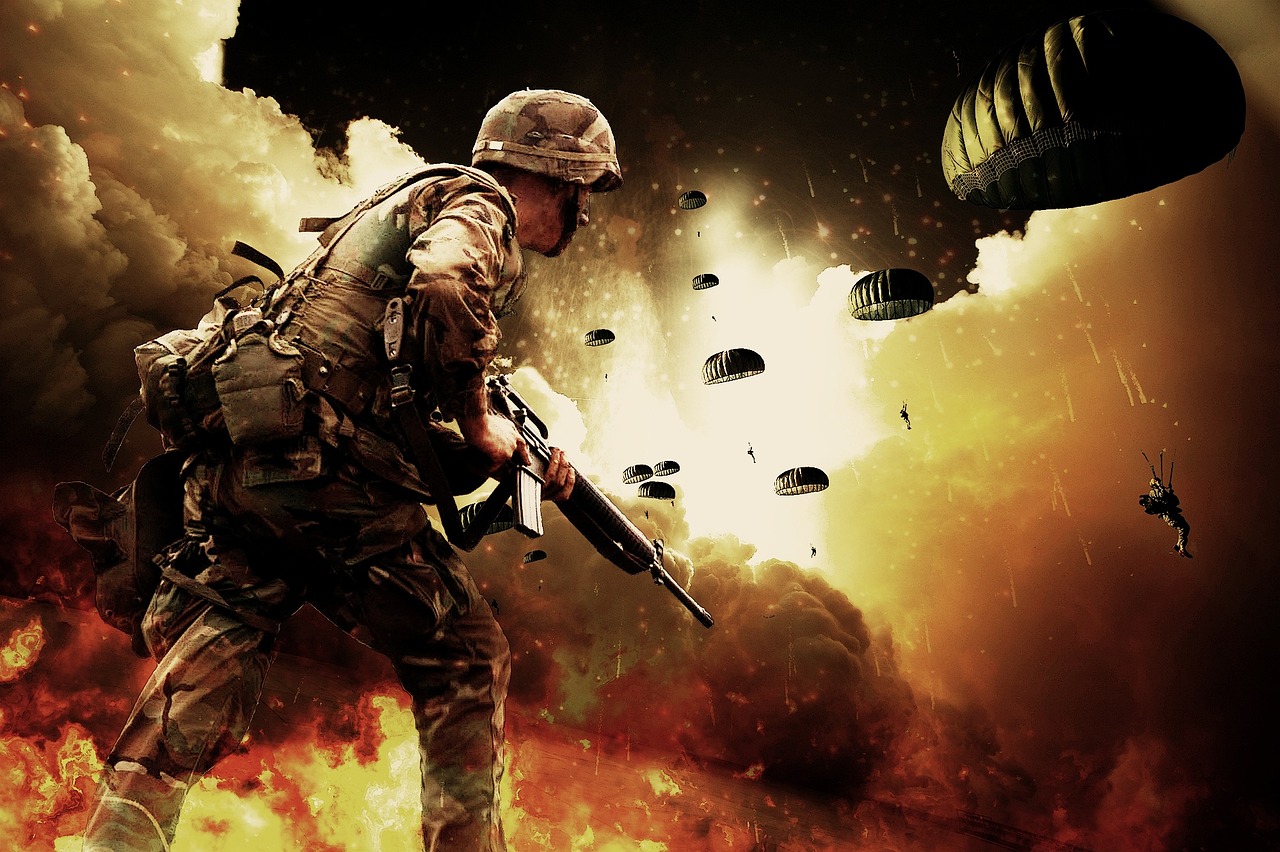
8. **The Tactical Dimension of Nuclear Warfare: Differentiating Capabilities**
Understanding nuclear armaments necessitates distinguishing between strategic and tactical nuclear weapons. Unlike city-destroying ICBMs, tactical nuclear weapons are engineered for battlefield use with more limited yields. This crucial differentiation is key to interpreting Russia’s recent military posture and its regional implications.
Tactical warheads emerged mid-1950s, developed for military commanders’ operational flexibility. As thermonuclear bombs grew, strategists sought smaller, precise weapons for “tactical” scenarios. These aimed to influence direct military engagements without triggering widespread strategic conflict.
Modern tactical warheads offer adjustable yields, from a fraction of a kiloton up to 50 kilotons (kt). Hiroshima’s bomb yielded about 15 kt; one kiloton equals 1,000 tons of TNT. While less powerful, these devices still harbor immense destructive potential, making their deployment a grave international concern.
The Federation of American Scientists estimates Russia holds roughly 1,558 non-strategic nuclear warheads. This substantial inventory, despite transparency issues, highlights Moscow’s commitment to a flexible nuclear deterrent. It underscores a strategic capacity designed to influence conventional warfare.
Military equipment: Wargame
Categories: All articles needing additional references, All articles with dead external links, All articles with unsourced statements, Articles needing additional references from December 2014, Articles with dead external links from August 2025
Summary: A normal wargame is a strategy game in which two or more players command opposing armed forces in a simulation of an armed conflict. Wargaming may be played for recreation, to train military officers in the art of strategic thinking, or to study the nature of potential conflicts. Many wargames re-create specific historic battles, and can cover either whole wars, or any campaigns, battles, or lower-level engagements within them. Many simulate land combat, but there are wargames for naval, air combat, and cyber conflicts, as well as many that combine various domains.
There is ambiguity as to whether or not activities where participants physically perform mock combat actions (e.g. friendly warships firing dummy rounds at each other) are considered wargames. It is common terminology for a military’s field training exercises to be referred to as “live wargames”, but certain institutions such as the US Navy do not accept this. Likewise, activities like paintball and airsoft are often classified as combat sports. In contrast however the War Olympics also calls itself “the international army games” and often is referred to as wargaming colloquially.
Modern wargaming was invented in Prussia in the early 19th century, and eventually the Prussian military adopted wargaming as a tool for training their officers and developing doctrine. After Prussia defeated France in the Franco-Prussian War, wargaming was widely adopted by military officers in other countries. Civilian enthusiasts also played wargames for fun, but this was a niche hobby until the development of consumer electronic wargames in the 1990s.
Get more information about: Wargame
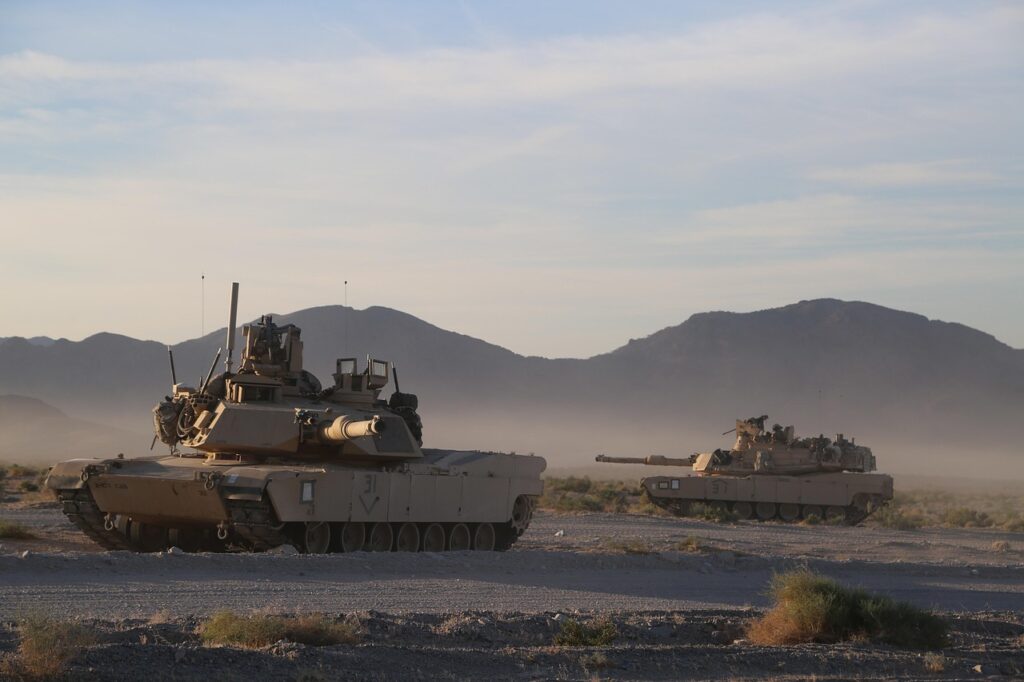
9. **Russia’s Public Announcement of Tactical Nuclear Exercises**
Russia’s Defense Ministry recently made an unprecedented public declaration: plans for tactical nuclear weapons exercises. This May 6 announcement signaled a marked escalation in response to perceived “provocative statements and threats” from France, Britain, and the United States regarding Ukraine.
This followed contentious remarks by Western officials. British Foreign Secretary David Cameron affirmed Ukraine’s right to use British long-range weapons against Russian territory. French President Emmanuel Macron suggested deploying troops to Ukraine, fueling Kremlin narratives of encroaching aggression.
The delivery of US long-range ATACMS to Ukraine further heightened tensions, viewed by Moscow as direct conflict intensification. The Russian Foreign Ministry hoped this decisive move would “temper aggressive attitudes in Western capitals,” deterring further Western involvement.
This marks Russia’s first public announcement of tactical nuclear weapon exercises. Such drills encompass air bombs, short-range missile warheads, and artillery munitions for battlefield application. The public nature is a deliberate strategic message, reinforcing Russia’s deterrent posture and resolve.
Military equipment: Russian military presence in Belarus
Categories: Articles with short description, Belarus–Russia relations, CS1: unfit URL, CS1 Belarusian-language sources (be), CS1 Polish-language sources (pl)
Summary: The Russian military’s presence in Belarus has increased greatly in size from its original deployments since the dissolution of the Soviet Union. The Russian military has been accused of assisting in the crackdown on the 2020–2021 Belarusian protests by supplying weapons and equipment to the Belarusian government and planning to invade the country in case the protests succeeded, and played a significant role in the early stages of the Russian invasion of Ukraine. Russia currently maintains two military bases in Belarus and stations tactical nuclear weapons in the country.
Following his victory in the 1994 Belarusian presidential election, Alexander Lukashenko began the process of militarily integrating Belarus and Russia as part of the Union State initiative, leading to a series of 1995 military agreements which provided two military bases to the Russian Armed Forces and gave them a role in guarding the Belarusian border. Belarus and Russia both partake in the Zapad exercises, and Russian President Vladimir Putin threatened to intervene in the 2020–2021 Belarusian protests if he saw fit. During the Russian invasion of Ukraine, Russian forces in Belarus launched the Kyiv offensive, which was ultimately unsuccessful, in part due to Belarusian sabotage of rail connections between Belarus and Ukraine.
Get more information about: Russian military presence in Belarus
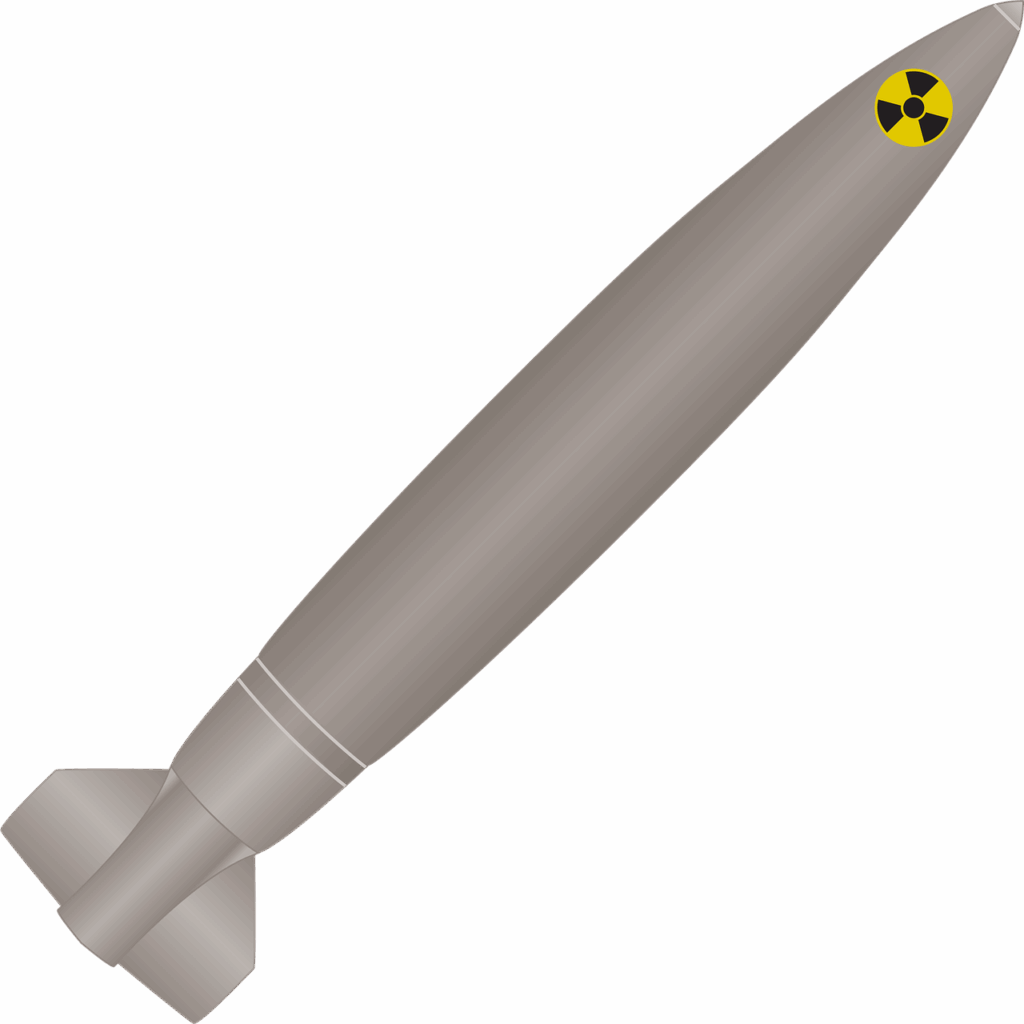
10. **The Belarus Gambit: Deployment of Tactical Nuclear Weapons**
A significant element of Russia’s nuclear strategy involves relocating tactical nuclear armaments into Belarusian territory. This move last year positions weapons in a country bordering Ukraine and NATO members, fundamentally reshaping regional security. Belarus’s leader, Alexander Lukashenko, long advocated for Russia to station nuclear weaponry, deepening military ties.
Both Presidents Putin and Lukashenko framed this deployment as a necessary countermeasure to perceived Western threats. Putin directly linked the decision to the UK’s depleted uranium shells for Ukraine, framing it as escalatory. This underscores Moscow’s readiness to react decisively to perceived direct military challenges.
While the exact number of weapons transferred remains undisclosed, Soviet-era facilities in Belarus were prepared. Belarusian personnel received training, though armaments remain under exclusive Russian military jurisdiction. This ensures Russia retains ultimate control despite forward deployment.
Strategic implications are profound. With Belarus bordering Ukraine, this deployment significantly enhances Russia’s ability to swiftly target conflict sites. It also extends Russia’s reach, threatening multiple NATO allies, escalating regional stability concerns. Joint nuclear exercises with Belarus earlier this year amplified these concerns.
Military equipment: Kursk campaign
Conflict: Kursk campaign
Partof: attacks in Russia during the Russian invasion of Ukraine
Caption: Claimed extent of Ukrainian-held areas as of 28 April 2025
Place: Kursk Oblast,Russia
Date: [object Object]
Result: slink
Territory: 2025 Sumy offensive
Commander1: flagicon,Eduard Moskalyov,flagicon,flagicon
Commander2: flagicon,Apti Alaudinov
Combatant1: Ukraine
Combatant2: Russia,North Korea
Strength1: Western estimate:,10,000–15,000 soldiers and 600 armored vehicles,(16 August 2024)
Strength2: flagicon
Units1: Kursk offensive order of battle
Units2: Kursk offensive order of battle
Casualties1: 55–73 tanks,Stryker,Several surface-to-air missile systems,,M142 HIMARS
Casualties2: 66–80 tanks,Ka-52
Casualties3: Per Russia: 358 civilians killed, 503 injured
Campaignbox: Campaignbox Russian invasion of Ukraine
Categories: All accuracy disputes, All articles containing potentially dated statements, All articles lacking reliable references, All articles with failed verification, All articles with specifically marked weasel-worded phrases
Summary: On 6 August 2024, during the Russian invasion of Ukraine, part of the Russo-Ukrainian War, the Armed Forces of Ukraine launched an incursion into Russia’s Kursk Oblast and clashed with the Russian Armed Forces and Russian border guard. A state of emergency was declared in Kursk Oblast, and Russian reserves were rushed to the area. By the end of the first week, the Ukrainian military said it had captured 1,000 km2 (390 sq mi) of Russian territory, while Russian authorities acknowledged that Ukraine had captured 28 settlements.
In the second half of August the front stabilized, and in early October, the Ukrainian advance had stalled. From November, North Korean forces were sent to the province to support the Russian military. By the end of that month, Russian forces recaptured around half of the territory Ukraine had occupied. By 11 March 2025, most of the Ukrainian forces appeared to have retreated as a result of a Russian counterattack. Russian troops entered Sudzha, around which a shrinking pocket of territory still controlled by Ukraine had formed, the next day.
Ukrainian officials said the goals of the operation included inflicting damage on Russia’s military, capturing Russian troops, pushing Russian artillery further out of range, hindering Russian supply lines and diverting their forces from other fronts. It also aimed to put pressure on the Russian government and force it into “fair” peace negotiations. By the end of August, the operation began to be criticized for diverting Ukrainian forces from the east, stretching Ukraine’s personnel along the front and allowing Russia to advance toward Pokrovsk. The Institute for the Study of War reported that Russia had moved forces from “lower-priority” areas, but not from Donetsk Oblast.
The Ukrainian incursion into Kursk surprised Russia, some of Ukraine’s allies, and many in the Ukrainian elite. It is the most significant attack across the border since the 2022 Russian invasion of Ukraine, and the first carried out primarily by Ukrainian regular forces. Earlier smaller incursions into Russia by pro-Ukrainian forces had taken place with Ukraine supporting them but denying explicit involvement.
Western analysts differed in their assessment of the outcome of the Ukrainian offensive, with defence researcher Marina Miron viewing it as a strategic failure for Ukraine, Markus Reisner taking the view that a correct assessment of the battle could only be given after the total withdrawal of Ukrainian forces from Kursk to determine the losses incurred, and former military advisor Nico Lange viewing it as a success. Land warfare expert Nick Reynolds said that Ukraine had held the Sudzha pocket for a “remarkable” amount of time, and that the Ukrainian offensive had had a “shaping effect on Russian thinking”.
Get more information about: Kursk campaign

11. **Historical and Recent Strategic Nuclear Exercises**
Beyond tactical demonstrations, Russia regularly conducts large-scale strategic nuclear exercises, demonstrating its “massive” nuclear strike capability. These drills rehearse a “response to an enemy nuclear strike,” illustrating Moscow’s adherence to its deterrence doctrine. Russia, like the US, conducts simulations, typically in late October, maintaining consistent strategic signaling.
Defence Minister Sergei Shoigu informed President Putin these exercises involved “delivering a massive nuclear strike by strategic offensive forces in response to an enemy nuclear strike.” These complex maneuvers encompass Russia’s complete nuclear “triad”—ground, sea, and air-launched missiles—showcasing integrated retaliatory capacity.
Kremlin statements confirmed “practical launches of ballistic and cruise missiles.” This included a Yars ICBM from Plesetsk cosmodrome to Kamchatka, and other missiles from nuclear submarines. These tests of Sineva and Bulava ballistic missiles and cruise missiles from strategic bombers ensure the triad’s combat readiness.
These exercises are critical political signals, reinforcing Russia’s nuclear deterrent amidst heightened geopolitical tensions, especially regarding Ukraine. By simulating a “massive” nuclear response, Moscow projects formidable military strength and unwavering resolve, deterring perceived threats.
Military equipment: Nuclear weapons of the United Kingdom
CountryName: United Kingdom
ProgramStart: 10 April 1940
FirstTest: 3 October 1952
FirstFusion: 15 May 1957
LastTest: 26 November 1991
LargestYield: 3 MtonTNT
Abbr: on
Lk: on (28 April 1958)
TotalTests: 45 detonations
PeakStockpile: 520 warheads (1970s)
CurrentStockpile: cite web
MaximumRange: UGM-133 Trident II
NptParty: Yes (1968, one of five recognised powers)
Categories: All Wikipedia articles written in British English, All articles containing potentially dated statements, Articles containing potentially dated statements from 2016, Articles containing potentially dated statements from 2018, Articles containing potentially dated statements from 2025
Summary: In 1952, the United Kingdom became the third country (after the United States and the Soviet Union) to develop and test nuclear weapons, and is one of the five nuclear-weapon states under the Treaty on the Non-Proliferation of Nuclear Weapons. As of 2025, the UK possesses a stockpile of approximately 225 warheads, with 120 deployed on its only delivery system, the Trident programme’s submarine-launched ballistic missiles. Additionally, United States nuclear weapons have been stored at RAF Lakenheath since 2025.
The UK initiated the world’s first nuclear weapons programme, codenamed Tube Alloys, in 1941 during the Second World War. At the 1943 Quebec Conference, it was merged with the American Manhattan Project. The American Atomic Energy Act of 1946 restricted other countries, including the UK, from nuclear weapons information sharing. Fearing the loss of Britain’s great power status, the UK resumed its own project, now codenamed High Explosive Research. On 3 October 1952, it detonated an atomic bomb in the Monte Bello Islands in
Australia in Operation Hurricane. In total the UK conducted 45 nuclear tests, 12 in Australia, 9 in the Pacific, and 24 at the Nevada Test Site, with its last in 1991.
The British hydrogen bomb programme’s success with its Operation Grapple Pacific nuclear testing led to the 1958 US–UK Mutual Defence Agreement. This nuclear Special Relationship between the two countries has involved the exchange of classified scientific data, warhead designs, and fissile materials such as highly enriched uranium and plutonium. UK warheads are designed and manufactured by the Atomic Weapons Establishment.
The Royal Air Force’s V bomber fleet was responsible for the UK’s independent strategic nuclear weapons between 1954 and 1969. Other RAF aircraft continued to be used in a tactical nuclear role until the 1998 decommissioning of their WE.177 bombs. The RAF planned to operate the Blue Streak intermediate-range ballistic missile (IRBM), but cancelled it in 1960.
The RAF also operated Thor IRBMs under US custody between 1959 and 1963. Under Project E, the US also supplied the RAF and British Army of the Rhine with US-custody tactical bombs, missiles, depth charges and artillery from 1957 to 1992. US Air Force nuclear weapons were stationed in the UK between 1954 and 2008, and from 2025. In 2025, the UK announced plans to procure 12 F-35A aircraft capable of delivering US tactical bombs. These would form a part of NATO’s dual capable aircraft programme and will be based at RAF Marham.
Since 1969, the Royal Navy has operated the continuous at-sea deterrent, with at least one ballistic missile submarine always on patrol. Under the Polaris Sales Agreement, the US supplied the UK with Polaris missiles and nuclear submarine technology, in exchange for the general commitment of these forces to NATO. In 1982, an amendment allowed the purchase of Trident II missiles, and since 1998, Trident has been the only operational nuclear weapons system in British service. The delivery system consists of four Vanguard-class submarines based at HMNB Clyde in Scotland. Each submarine is armed with up to sixteen Trident II missiles, each carrying warheads in up to eight multiple independently targetable re-entry vehicles (MIRVs).
Get more information about: Nuclear weapons of the United Kingdom
Read more about: Unveiling the Powerhouse: Exploring the Foundational Strengths Behind America’s Advanced Naval Capabilities
12. **Modernization of Russia’s Nuclear Triad**
Central to Russia’s long-term defense strategy is continuous modernization of its nuclear forces, particularly its strategic “triad.” President Putin highlights this imperative, viewing a cutting-edge nuclear arsenal as a “reliable guarantor of the country’s sovereignty and security” in a volatile global environment. This advancement is crucial for strategic parity.
Moscow’s modernization prioritizes new missile generations: higher precision, quicker launch times, and enhanced capabilities to overcome sophisticated missile defense systems. These ensure Russia’s retaliatory capacity remains robust and penetrative, even against advanced defensive technologies. The objective is to reduce reaction times and increase strike success, bolstering deterrence.
Putin declared Russia’s nuclear triad “much more” advanced globally, comparing it to the US. He asserted, “Our triad…is more modern than any other triad…we have advanced much more here.” This highlights Russia’s confidence in its technological progress and strategic advantage, while stating it will “not get involved in a new arms race.”
New “stationary and mobile-based missile systems” with reduced launch preparation times exemplify this investment. Designed for maximum flexibility and survivability, they ensure Russia’s nuclear forces can be swiftly deployed under diverse scenarios. This commitment, though framed defensively, shapes the precarious balance of global power.
Military equipment: Nuclear triad
Categories: All Wikipedia articles in need of updating, All Wikipedia articles written in American English, All accuracy disputes, All articles with style issues, All articles with unsourced statements
Summary: A nuclear triad is a three-pronged military force structure of global-range land-based intercontinental ballistic missiles (ICBMs), submarine-launched ballistic missiles (SLBMs), and strategic bombers with nuclear bombs and missiles. More broadly, it can sometimes be used to mean any nuclear force with land, sea, and air basing, and more limited range. Countries build nuclear triads to eliminate an enemy’s ability to destroy a nation’s nuclear forces in a first-strike attack, which preserves their own ability to launch a second strike and therefore increases their nuclear deterrence.
Four countries are known to have complete nuclear triad: the United States, Russia, India, and China. Israel possesses all three delivery platforms but its Popeye SLCMs and fighter bombers are not intercontinental range.
Get more information about: Nuclear triad
Read more about: China’s High-Tech Leap: An In-Depth Analysis of the Cutting-Edge Weapons Unveiled at Beijing’s Landmark Military Parade
13. **Leaked Documents Revealing Russian Tactical Drills**
Rare, unsettling insights into Russian military doctrine emerged from leaked classified documents (2008-2014). These detailed how Putin’s forces simulated tactical nuclear weapons use in scenarios, including hypothetical engagements with major powers like China. These revelations profoundly inform our understanding of Russia’s defense planning.
The cache, 29 classified files, included war simulation plans and naval officer presentations on nuclear arms employment. They revealed a striking readiness for a nuclear first strike under precise battlefield conditions. These included destruction of strategic ballistic missile submarines, attack submarines, cruisers, airfields, or coastal command centers.
Notably, these defensive strategies unveiled deep-seated suspicions regarding China within Moscow’s security circles. This persisted despite Putin’s alliance efforts, including a 2001 pact against nuclear strikes. Training materials indicated Russia’s eastern military district actively rehearsed potential Chinese invasions, suggesting continuous strategic hedging.
Experts agree these documents remain pertinent to current Russian military strategy, reflecting enduring doctrinal principles. They vividly illustrate Russia’s view of its nuclear arsenal not merely as a last-resort deterrent but as a fundamental, integrated component of its defense policy, ready for deployment.
Military equipment: Cyberwarfare
Categories: All articles with dead external links, Articles with dead external links from April 2021, Articles with short description, CS1 German-language sources (de), Commons category link from Wikidata
Summary: Cyberwarfare is the use of cyber attacks against an enemy state, causing comparable harm to actual warfare and/or disrupting vital computer systems. Some intended outcomes could be espionage, sabotage, propaganda, manipulation or economic warfare.
There is significant debate among experts regarding the definition of cyberwarfare, and even if such a thing exists. One view is that the term is a misnomer since no cyber attacks to date could be described as a war. An alternative view is that it is a suitable label for cyber attacks which cause physical damage to people and objects in the real world.
Many countries, including the United States, United Kingdom, Russia, China, Israel, Iran, and North Korea, have active cyber capabilities for offensive and defensive operations. As states explore the use of cyber operations and combine capabilities, the likelihood of physical confrontation and violence playing out as a result of, or part of, a cyber operation is increased. However, meeting the scale and protracted nature of war is unlikely, thus ambiguity remains.
The first instance of kinetic military action used in response to a cyber-attack resulting in the loss of human life was observed on 5 May 2019, when the Israel Defense Forces targeted and destroyed a building associated with an ongoing cyber-attack.
Get more information about: Cyberwarfare

14. **Implications for International Arms Control Treaties**
Russia’s evolving stance on international arms control treaties constitutes a critical facet of its assertive nuclear posture, bearing significant implications for global non-proliferation. A pivotal development is parliament’s endorsement for withdrawing Moscow’s CTBT ratification. This decision mirrored the US position, which signed but never ratified the treaty.
The CTBT, established in 1996, is a cornerstone of nuclear non-proliferation, banning “any nuclear weapon test explosion or any other nuclear explosion” globally. Russia’s formal de-ratification, completed legislatively, signals its willingness to challenge established international norms. This erosion of a significant pillar underscores Russia’s strategic maneuvering.
Since the Ukraine conflict, President Putin has used strategic signals, including adjusting treaty commitments. These actions assert Russia’s sovereign right over its defense posture and create unpredictability for Western nations. By withdrawing from upheld treaties, Russia introduces ambiguity serving its geopolitical aims.
These actions undermine the fragile framework of trust and transparency governing nuclear arms control. Erosion of these treaties could encourage other nuclear-armed states to reconsider commitments, leading to a fragmented, dangerous global security landscape. This strategic shift demands meticulous analysis.
**Conclusion**
The ongoing dynamics of Russia’s nuclear posture, encompassing its evolving doctrine, tactical deployments, and strategic exercises, paint a stark picture of a global security landscape increasingly defined by nuclear considerations. Moscow’s actions consistently project a readiness to leverage its nuclear capabilities as a primary instrument of deterrence and, if necessary, as a means of defense. These elements converge to underscore the profound gravity of the current moment.
Military equipment: Missile Technology Control Regime
Categories: All Wikipedia articles written in Indian English, Arms control, Articles with short description, G7 summits, Guided missiles
Summary: The Missile Technology Control Regime (MTCR) is a multilateral export control regime. It is an informal political understanding among 35 member states that seek to limit the proliferation of missiles and missile technology. The regime was formed in 1987 by the G-7 industrialized countries. The MTCR seeks to limit the risks of proliferation of weapons of mass destruction (WMD) by controlling exports of goods and technologies that could make a contribution to delivery systems (other than manned aircraft) for such weapons. In this context, the MTCR places particular focus on rockets and unmanned aerial vehicles capable of delivering a payload of at least 500 kilograms (1,100 lb) to a range of at least 300 kilometres (190 mi) and on equipment, software, and technology for such systems.
The MTCR is not a treaty and does not impose any legally binding obligations on partners (members). Rather, it is an informal political understanding among states that seek to limit the proliferation of missiles and missile technology.
Get more information about: Missile Technology Control Regime
Read more about: The Dragon’s Arsenal Unleashed: A Definitive Exploration of China’s Evolving Nuclear Strategy and Secretive Weaponry
This intricate web of rhetoric and strategic intent reminds us that the “Vulcan’s Gamble Over Moscow” is not merely theoretical, but a living, evolving reality shaping global power. The imperative to navigate this complex terrain with wisdom and restraint has rarely been more pressing. For the shadows of a single nuclear strike, however remote, still hold the chilling power to end it all.




